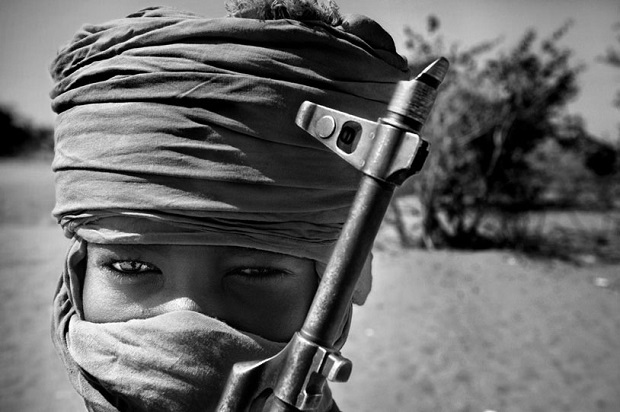The Canadian Armed Forces has come out with its very first doctrine which addresses the possibility of Canadian troops encountering child soldiers in overseas missions.
In many conflict zones around the world children under the age 15 are conscripted or forcibly made to participate actively in armed hostilities. Human Rights Watch once estimated that more than 300,000 child soldiers are involved in conflicts around the world and that 40 per cent of armies, militias, gangs, terrorist organizations, and resistance forces use children.
Furthermore, an estimated 250 million children live in countries and areas affected by armed conflict. Some children have permanent disabilities as a result of landmines and other explosive devices, while much more suffer psychological trauma.
The Canadian initiative directly supports the United Nations Security Council resolution 1261, which urges parties to armed conflicts to abide by concrete commitments made to ensure the protection of children in situations of armed conflict. The preamble of the resolution noted recent efforts to bring to an end the use of child soldiers in violation of international law, including the Worst Forms of Child Labour Convention and the Rome Statute of the International Criminal Court which prohibits forced conscription of children under the age of fifteen in armed forces or the participation in war crimes.
The Canadian Armed Forces Joint Doctrine Note (JDN) 2017-01 Child Soldiers was developed following discussions with Senator Romeo Dallaire on his direct experiences with child soldiers, as well as those of CAF members who have met challenges when facing underage combatants. The doctrine was produced in a condensed timeframe, reflecting its high priority for the Chief of the Defence Staff, General Jonathan Vance.
The doctrine directly supports the United Nations Security Council resolution 1261, which urges parties to armed conflicts to abide by concrete commitments made to ensure the protection of children in situations of armed conflict.
The United Nations’ Security Council (UNSC) has identified six grave violations against children in conflict situations:
- recruitment or use of children as soldiers
- sexual violence against children
- killing and maiming of children
- the abduction of children
- attacks against schools or hospitals
- denial of humanitarian access for children
“Child soldiers are a truly sad reality of conflict in some of the places where our personnel may be called upon to serve,” Gen Jonathan Vance, chief of the defence staff said in a statement. “I am confident this guidance will better equip members of the Canadian Armed Forces to manage this aspect of conflict in the future and help reduce the notion of child soldiers being exploited.”
The JDN offers guidance to individuals, units, and commanders on how to approach the difficult situation of conflicts involving child soldiers, including maximizing the safety of Canadian Armed Forces members and child soldiers.
It includes guidance for the planning and execution of operations, including specialized pre-deployment training.
For example, the doctrine instructs on how Canadian troops should handle child soldiers that are taken, prisoners. It says child soldiers should be treated differently from adult combatants. It says there should be a greater focus on the rehabilitation of child soldiers and that they should be “rapidly separated from adult fighters and handed over to an appropriate, mandated civilian process.”
This initiative is consistent with Canada’s overall commitment to ending the use of girls and boys in hostilities, as demonstrated by our efforts as chair of the Group of Friends on Children and Armed Conflict at the UN in New York, the funding of a number of child protection initiatives, and Canada’s recent endorsement of the Safe Schools Declaration.
Commanders are expected to use the JDN as the baseline guidance for their pre-deployment training, operational and mission-specific considerations, and post-deployment follow-up for personnel.
